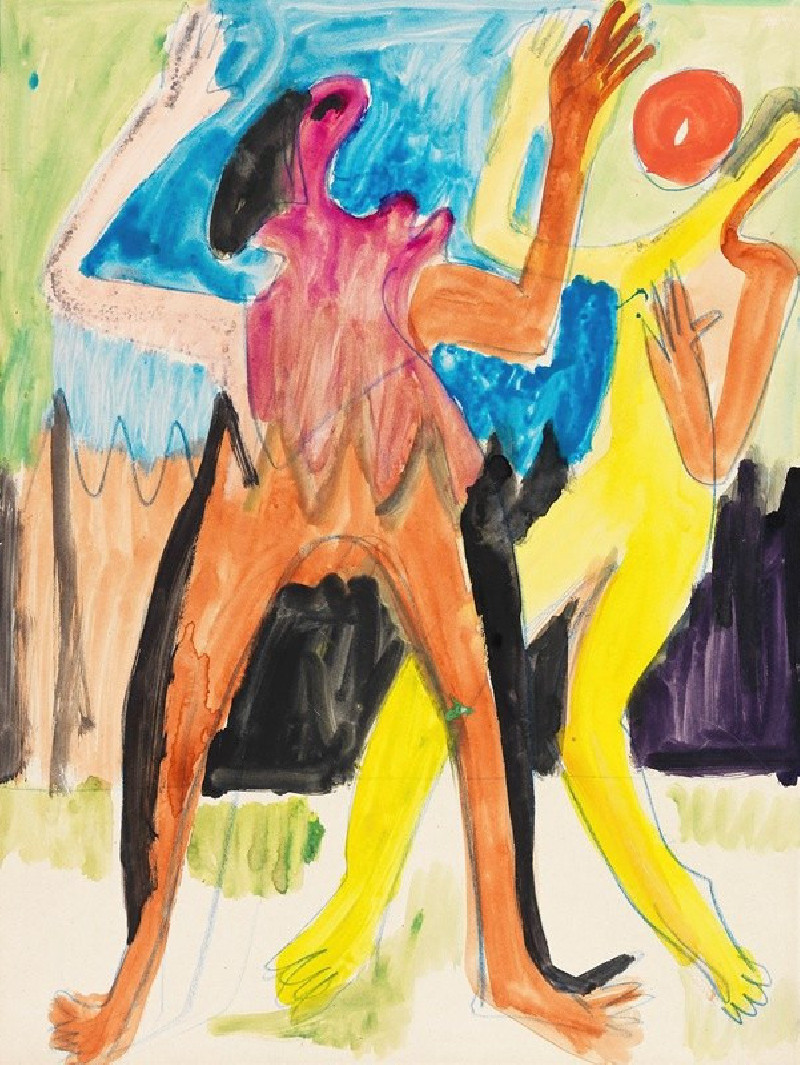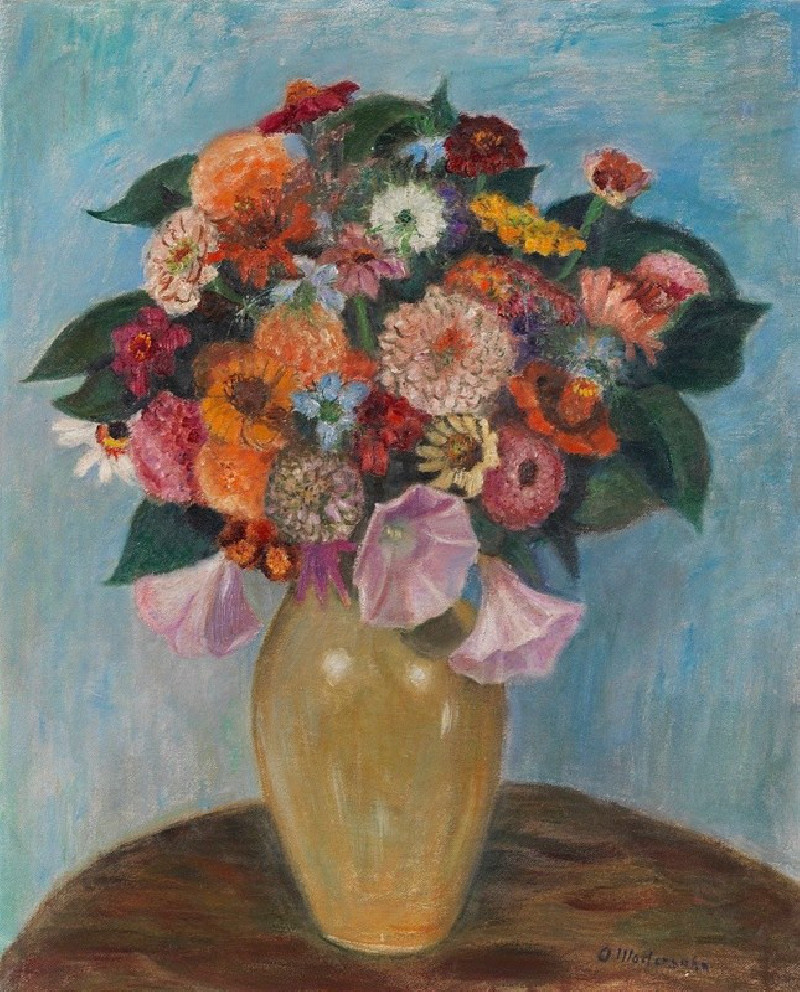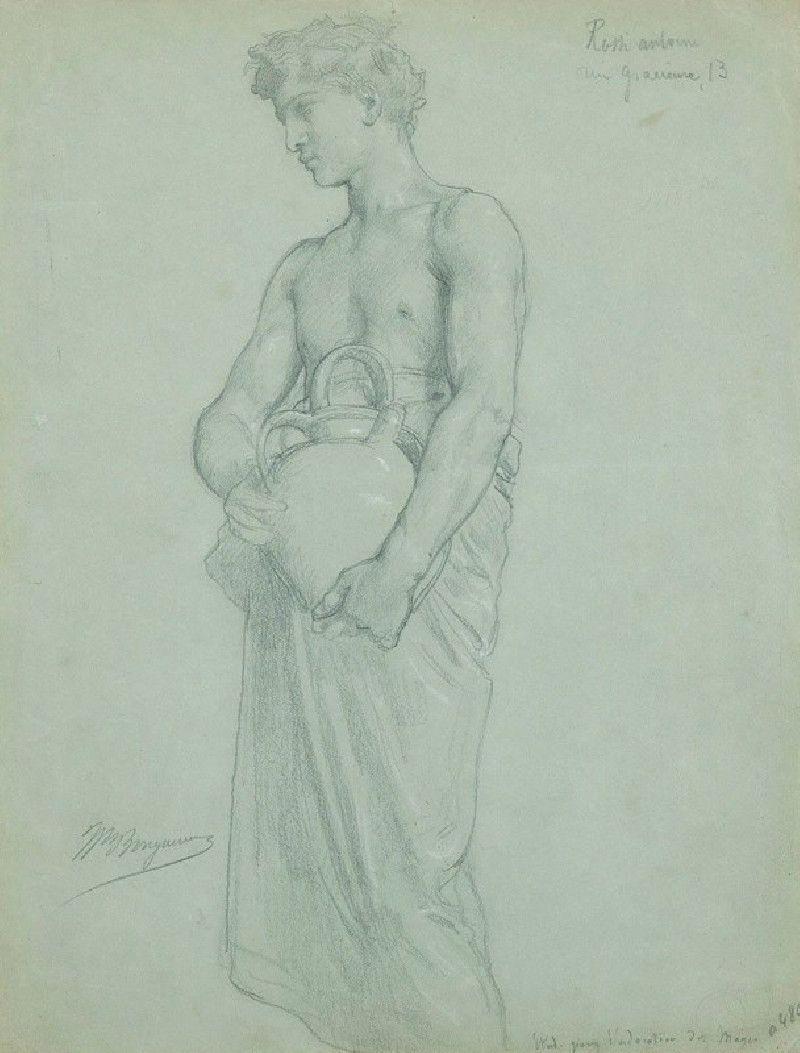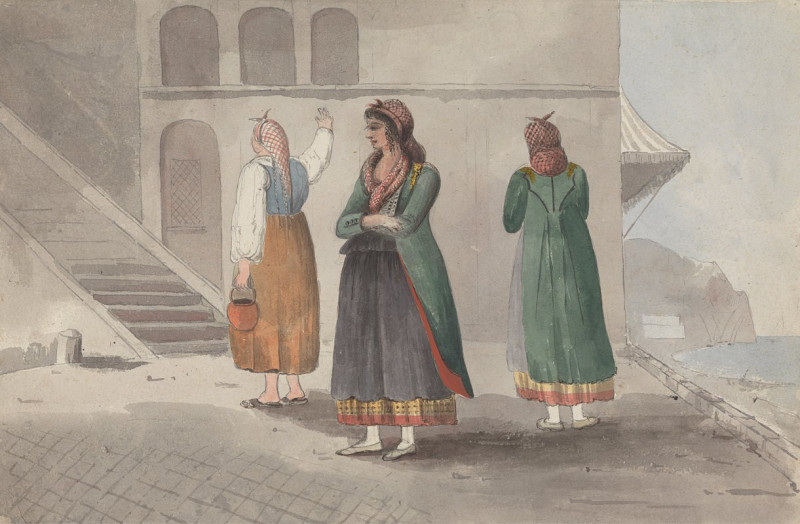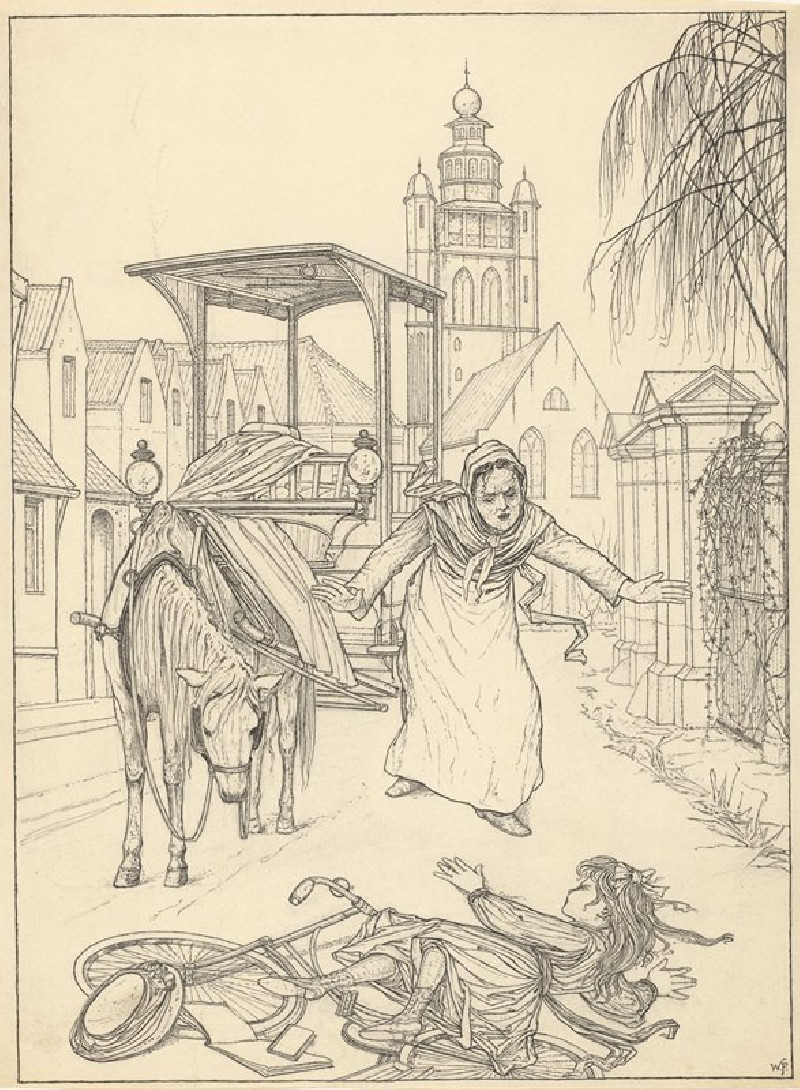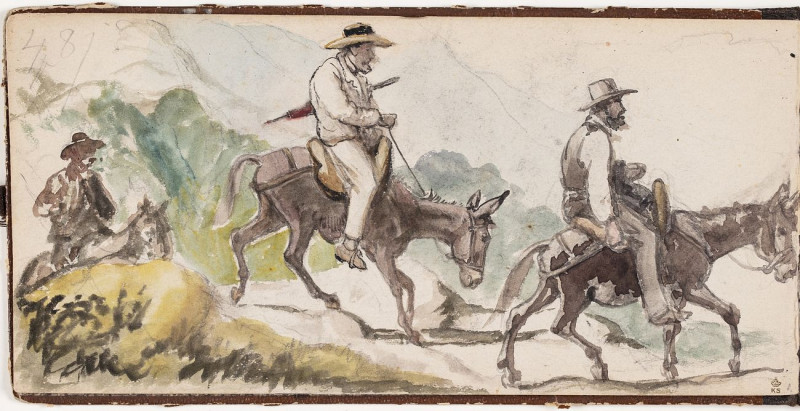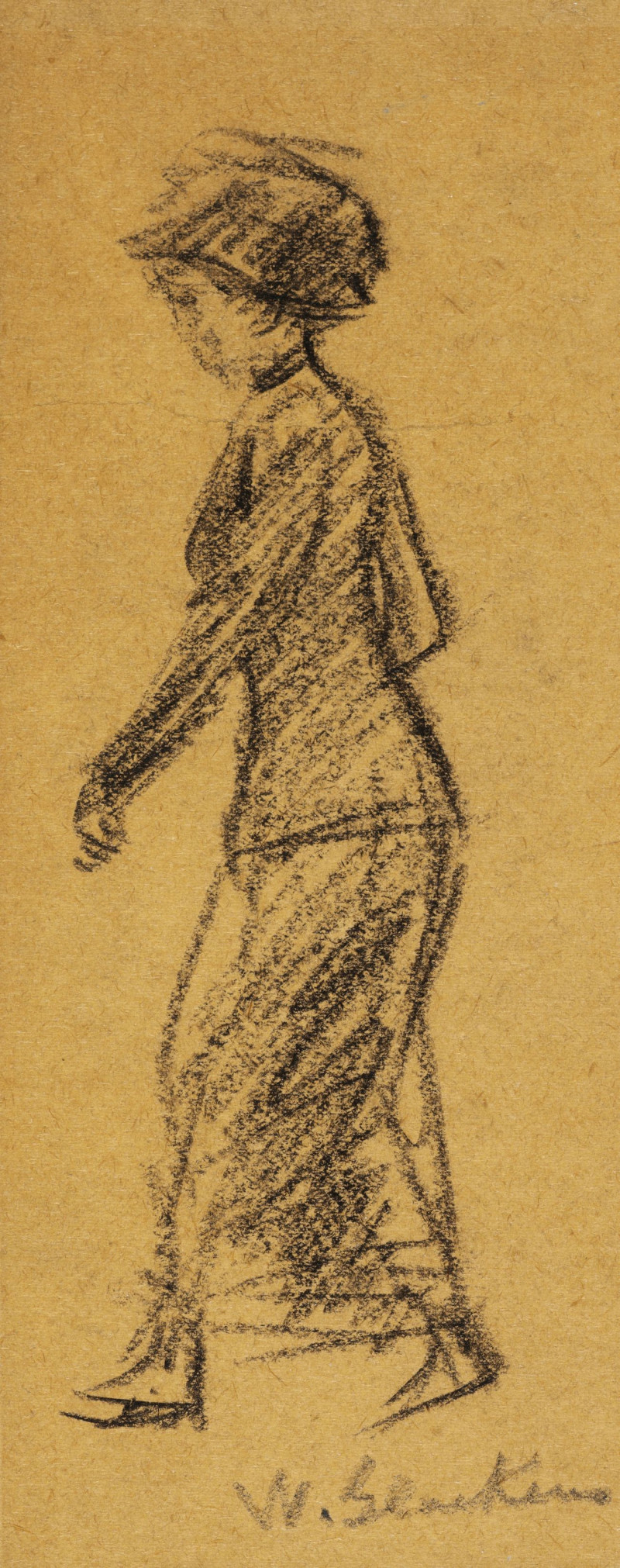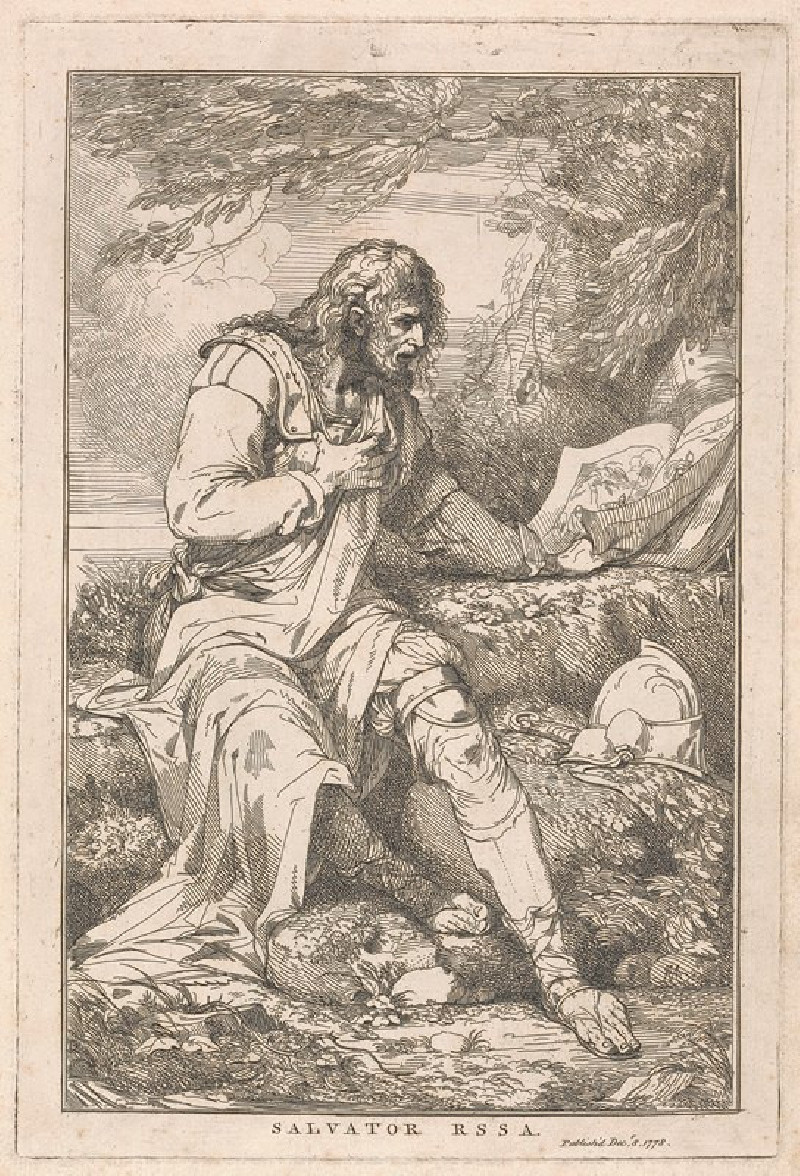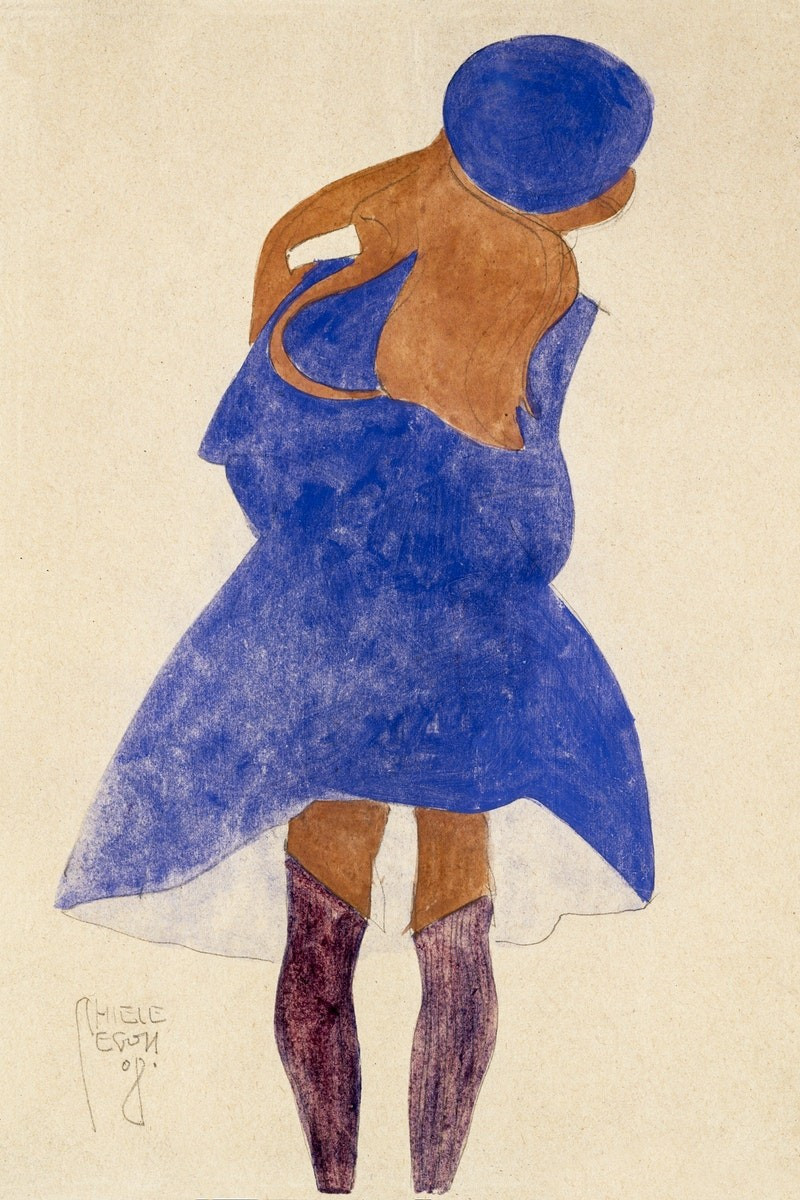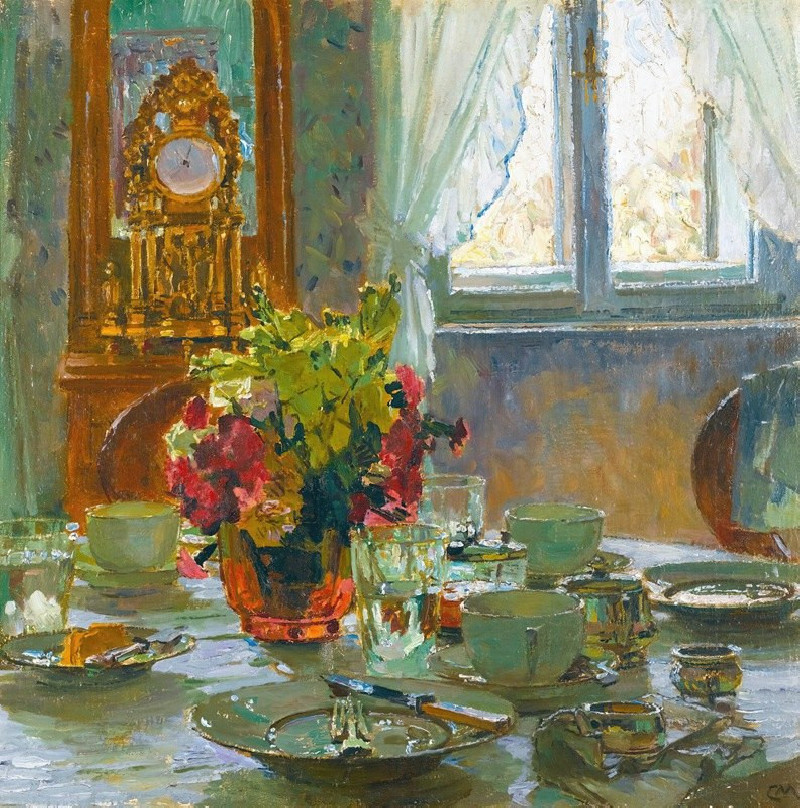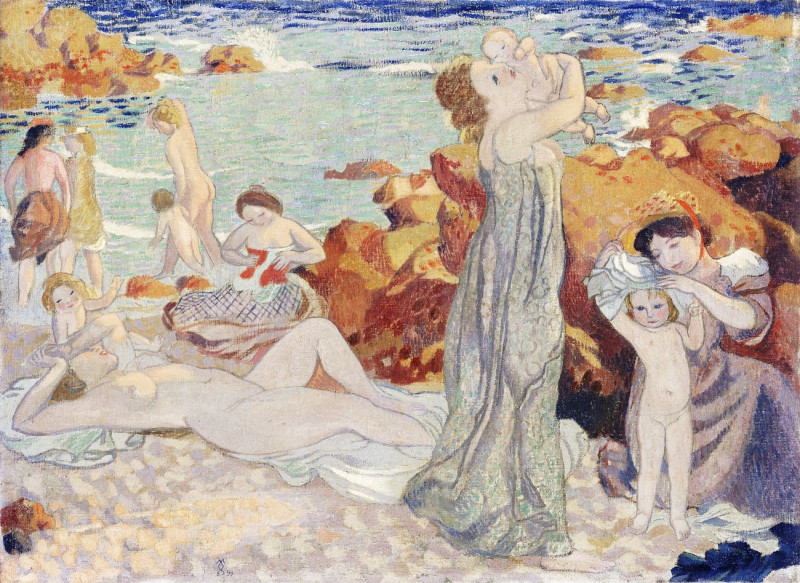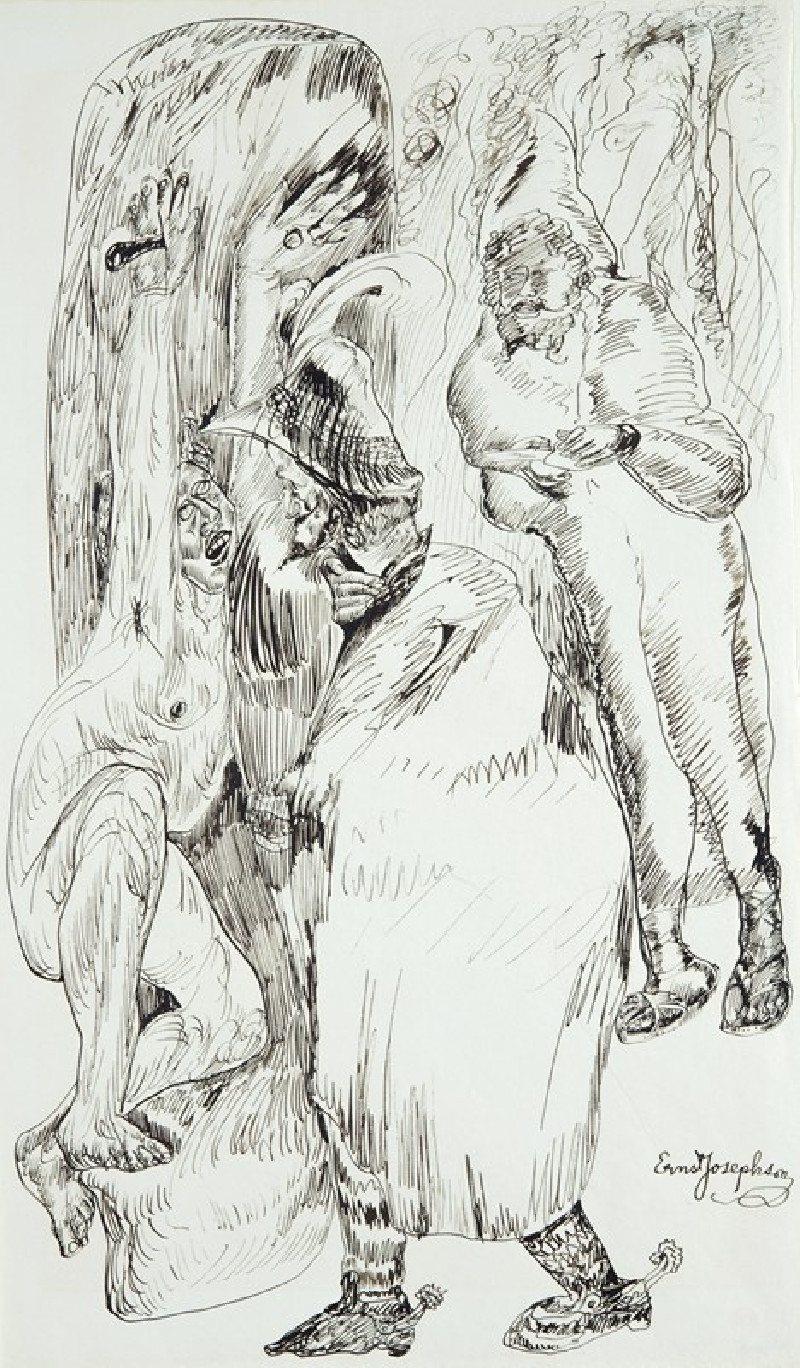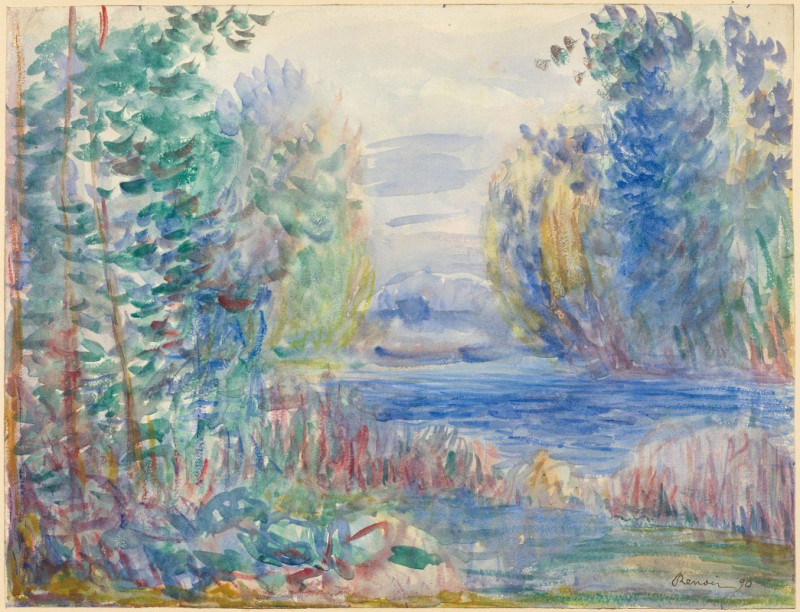Ballspielendes Paar (1933)
Technique: Giclée quality print
Recommended by our customers
More about this artwork
Ernst Ludwig Kirchner, a pivotal figure in the Expressionist movement, explores the theme of human interaction with nature and each other in his vibrant work "Ballspielendes Paar" (1933), translating to "Ball-playing Couple." This piece is a compelling example of Kirchner's fascination with color and form in expressing emotional and dynamic scenes.The painting depicts two figures energetically engaged in a game of catch under a bright, abstracted landscape. The figures, portrayed with elongated and distorted limbs, reflect Kirchner's signature style of exaggerated forms, which intensifies the sense of movement and playful tension within the scene. The male figure is painted in vivid orange and black tones, while the female figure is rendered in contrasting yellow and blue, emphasizing their dynamic interaction.Swirls of bold, untreated colors enhance the background, contributing to a sense of spontaneity and fluidity. Kirchner's use of non-naturalistic colors and striking forms not only captures a moment of joyful recreation but also conveys the emotional resonance and psychological perceptions underlying ordinary human activities.
Delivery
Returns
Ernst Ludwig Kirchner (1880–1938) was one of the most important German Expressionist painters. He was a co-founder of Die Brücke, a group of German expressionist artists formed in Dresden in 1905. Die Brücke and Kirchner took inspiration from Vincent Van Gogh and Edvard Munch, as well as African and Oceanic art. They used woodblock printing as a medium to showcase their signature style: flat, unrealistic images with vivid colors. The recurring themes in Kirchner's artworks included exotic cultures, faraway landscapes, self-portraits, dancers and Berlin street life. His paintings and prints effectively portrayed non-European cultures despite the fact that he never traveled outside of Europe.

